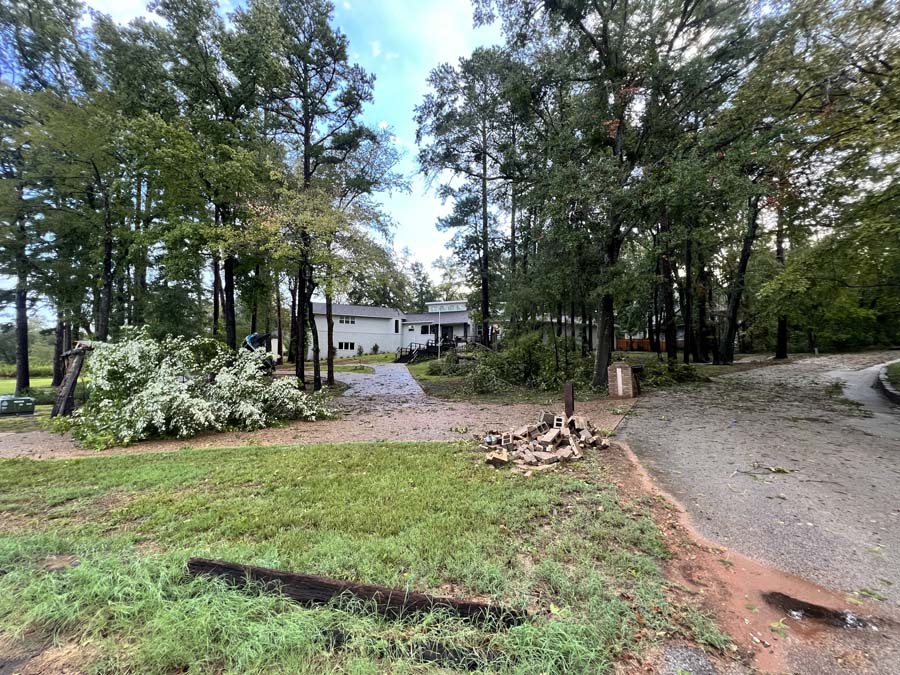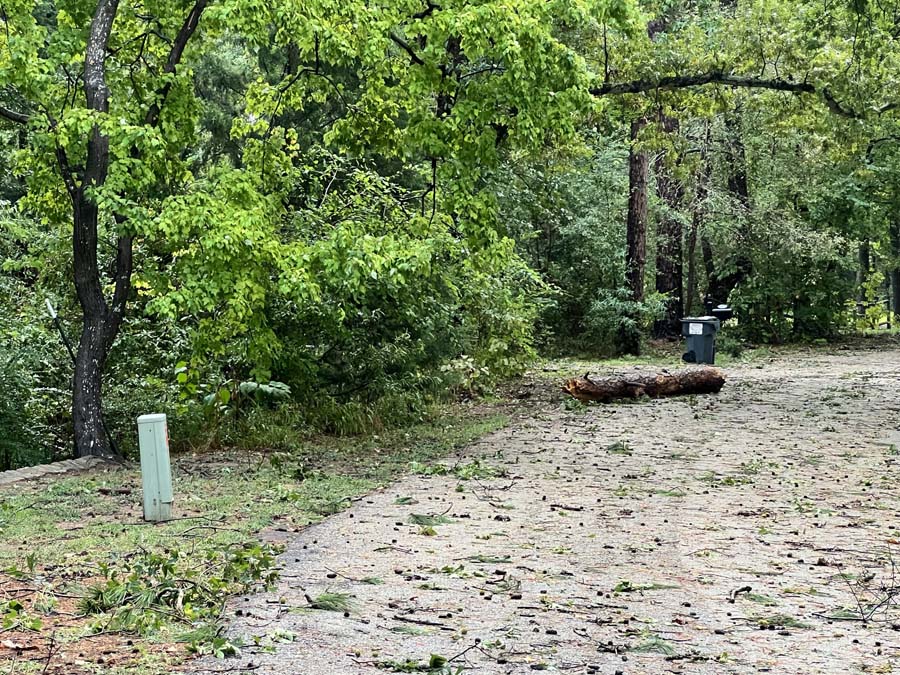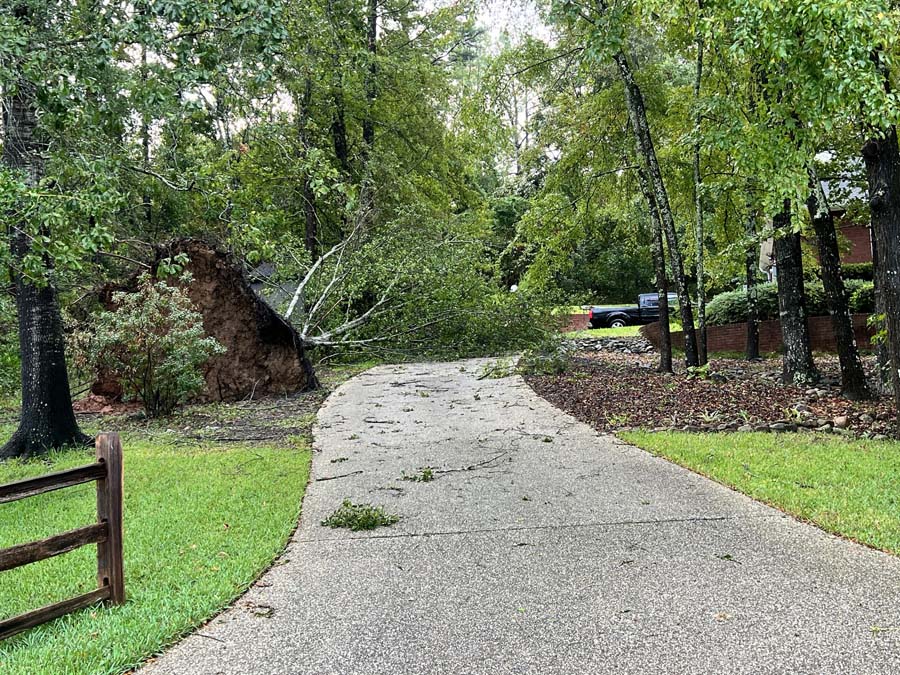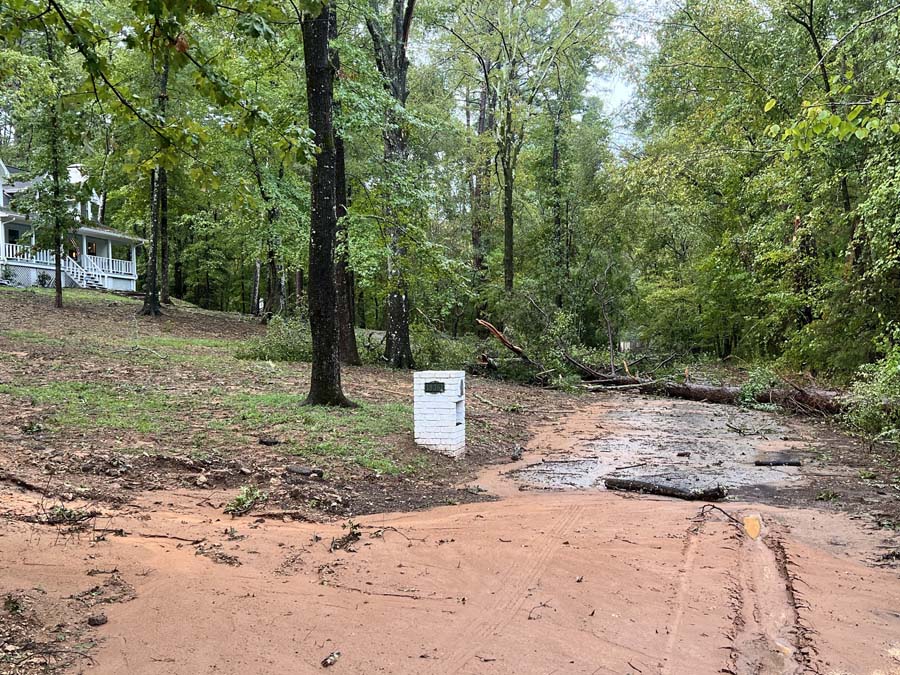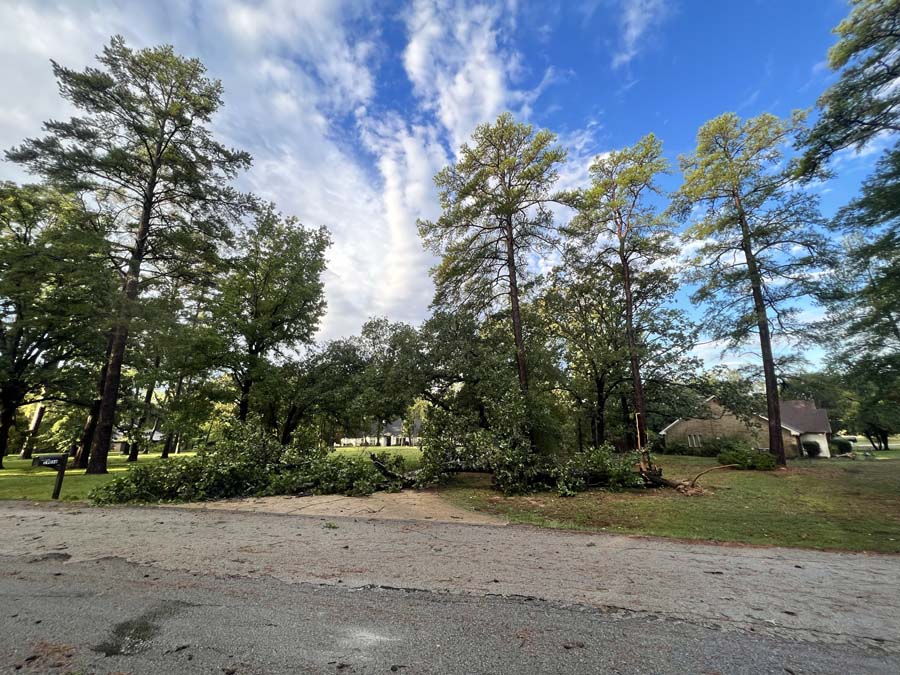Laura Graul has built a very lovely “Little Library”, complete with bench. I stopped to watch her and Mike doing a very professional installation. We look forward to seeing all you book lovers Thursday afternoon at 4:30 for the dedication.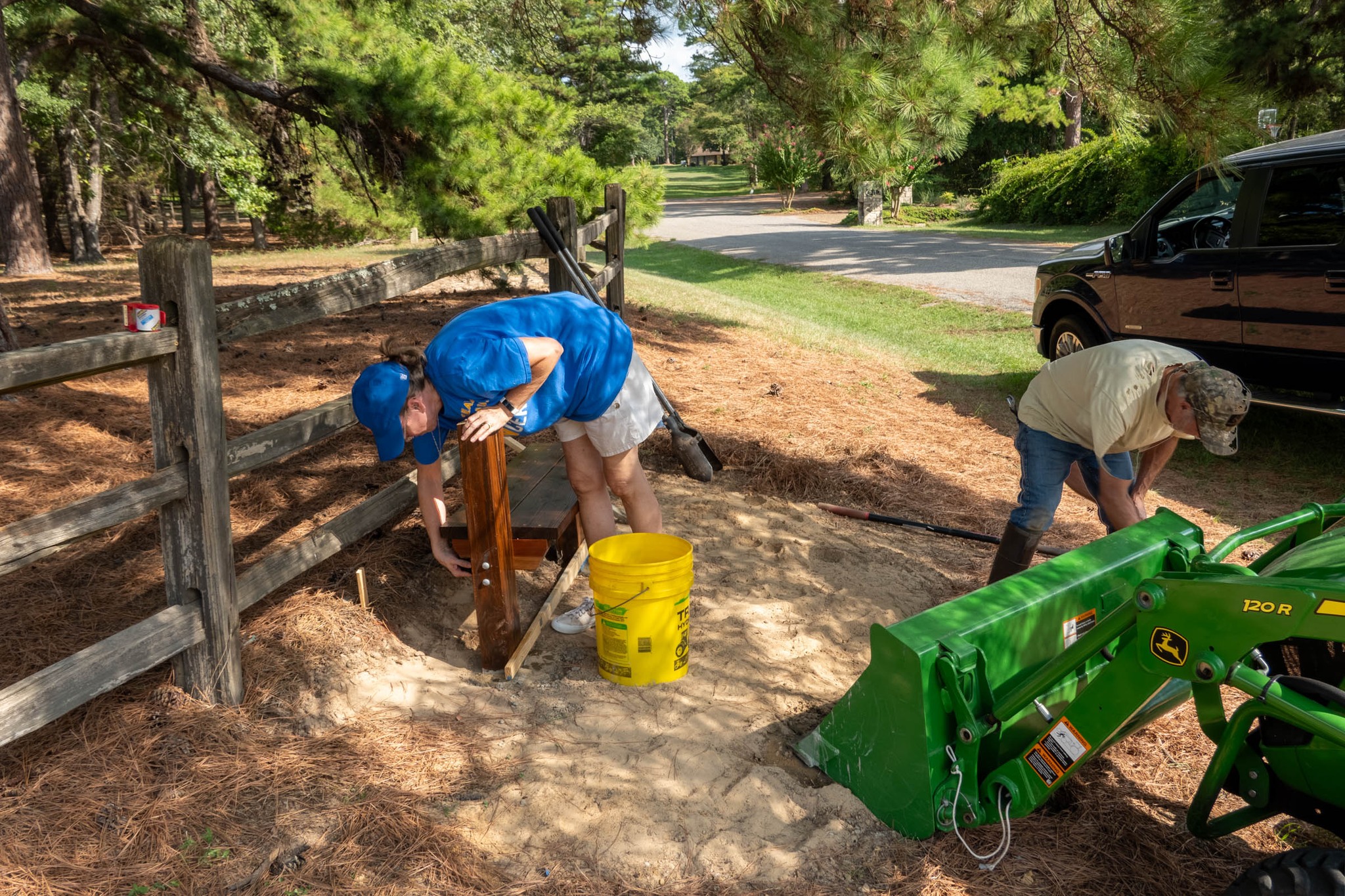
After the Storm
The good news is we got 1.6” of rain. The bad news is there are trees and limbs down all over Country Place. I had a 7:30 a.m. doctor’s appointment at the Christus on Broadway and all the traffic lights were out. Traffic was backed up for a mile. Barely made it on time and then learned that there was no power at the hospital, either. On my way back to Country Place the line of stop-and-go traffic stretched from Loop 49 almost to FM 346. Kudos to the neighbors with chainsaws and pickups…they’re sure coming in handy this morning.
Caring for Your Septic or Aerobic System
If you are new to the neighborhood, you may also be a first-time septic or aerobic system owner. For the first couple of years here, we tried caring for our aerobic system, regularly cleaning or replacing the dispersal heads on the south end of our yard, and adding the special chlorine tablets several times a year. Then one night a strange alarm went off and we learned that fire ants had stripped the insulation off the wires leading to the aerator and it had shorted out. After replacing the wiring and aerator, we decided to enter into a service agreement with a company that services aerobic systems. We did an online search and talked to several companies, but were referred by one of our real estate clients to Randy’s Septic (Randy and his two sons are friendly and reliable.) We pay $250 a year which includes an extra $60 for chlorine. Josh comes by, checks the system, and adds chlorine. We like the fact that we get to recycle the grey water to irrigate our side yard, and the grass grows well there.
However, if you have a septic system, the dispersal is through buried field lines. Although there’s no annual maintenance, you will need to be mindful of a few things:
1. Regular Pumping: It’s recommended to have your septic tank pumped every 3-5 years, depending on the size of your household and tank. This helps remove accumulated solids and prevents clogging. (Because much of Country Place has a lot of red clay and iron ore rocks, regular pumping is really important.)
2. Water Conservation: Excessive water usage can overload the system. Be mindful of water consumption by fixing leaks, using water-efficient appliances, and spreading out laundry and dishwashing loads.
3. Proper Waste Disposal: Only flush toilet paper and human waste down the toilet. Avoid flushing non-biodegradable items like wipes, feminine hygiene products, or chemicals, as they can damage the system.
4. Septic-Friendly Products: Use septic-safe cleaning products and avoid harsh chemicals that can disrupt the natural bacteria in the tank. Look for labels that indicate they are safe for septic systems.
5. Drain Field Protection: Avoid parking vehicles or placing heavy objects over the drain field, as this can compact the soil and hinder proper wastewater absorption.
6. Regular Inspections: Have a professional inspect your septic system regularly to identify any potential issues before they become major problems.
Remember, every septic system is unique, so it’s always a good idea to consult with a professional for specific care instructions based on your system’s design and location. Glenn Harris designed many of the systems here in Country Place and is very knowledgeable about our soil type.
Protesting Your Property Taxes, 2023
We have helped a number of neighbors gathering info in preparation for protesting their property taxes, which jumped considerably for many of us. Country Place published sales of four homes in 2022 (we don’t have access to private sales). You can click the link below to see detail of these sales, which you will need to do in order to compare your home:
And here is a comparative market analysis showing greater detail of the sold homes. You can see the big swing in cost per square foot ranging from $127 to $184 a square foot; a lot depends on the home’s age, updates, and maintenance. Obviously, a forty-year-old home with no updates and a lot of deferred maintenance is going to appraise for much less than a newer, more energy-efficient home with up-to-date features. The spreadsheet below will give you a good idea of what Smith County’s appraisers are looking at in this current appraisal period. For specific information on protesting Smith County taxes, click here. If you have questions regarding your home’s appraisal, feel free to call me (903.714.7090) or Andrea (903.714.7091).

